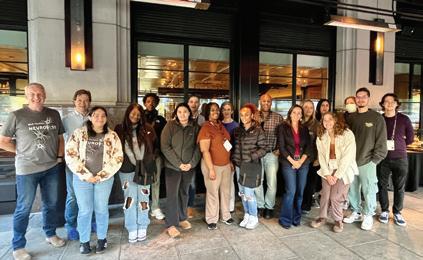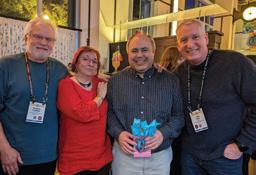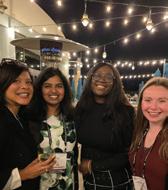NE UR OSCIENCE
University of Rochester | Ernest J. Del Monte Institute for Neuroscience Vol. 22 - 2024


University of Rochester | Ernest J. Del Monte Institute for Neuroscience Vol. 22 - 2024

How philanthropist Tom Golisano's $50 Million gift will transform the lives of people with intellectual and development disabilities
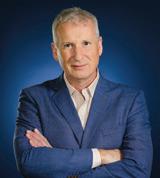
John J. Foxe, PhD
Kilian J. and Caroline F. Schmitt Chair in Neuroscience
Director, Ernest J. Del Monte Institute for Neuroscience
Professor & Chair, Department of Neuroscience
Imust begin with a thank you to Rochester philanthropist Tom Golisano. In June, he made a historic gift to the University to create the Golisano Intellectual and Developmental Disabilities Institute.
IDD related care and research was underway at the University and Medical Center. It is because of all of those who came before us that we find ourselves with this incredible opportunity to propel into a new stratosphere and have a worldwide impact.
ON THE COVER
From left: David Linehan, MD, John Foxe, PhD, President
Sarah Mangelsdorf, Tom Golisano, Richard Handler. Foxe shakes Golisano's hand at the historic announcement of the Golisano Intellectual and Developmental Disabilities Institute.
This institute is catapulting the clinical and transitional work at the University and Medical Center well into the future, enabling us to accelerate our efforts to improve lives and find the best answers for people with intellectual and developmental disabilities (IDD). Thank you, Tom, for your philanthropy, support, and dedication to bettering the lives of people with IDD. It is a truism that the test of the strength of a great society is to be found in the ways it treats its most vulnerable. At the new Golisano IDD Institute, we will hew to a simple but powerful maxim—that no person shall be defined by their limitations, but rather by their possibilities!
We have dedicated the cover story to sharing how this gift came about. For more than a half-century, the foundational work of
Del Monte Institute for Neuroscience Executive Committee
John Foxe, PhD, Chair, Department of Neuroscience
Bradford Berk MD, PhD, Professor of Medicine, Cardiology
Robert Dirksen, PhD, Chair, Department of Pharmacology & Physiology
Diane Dalecki, PhD, Chair, Department of Biomedical Engineering
Jennifer Harvey, MD, Chair, Department of Imaging Sciences
Robert Holloway, MD, MPH, Chair, Department of Neurology
Paige Lawrence, PhD, Chair, Department of Environmental Medicine
Hochang (Ben) Lee, MD, Chair, Department of Psychiatry
Shawn Newlands, MD, PhD, MBA, Chair, Department of Otolaryngology
A few weeks before this announcement, we welcomed our current cohorts of NEUROCITY and NEUROEAST scholars to Rochester. I am proud of these successful Neuroscience Diversity programs and grateful to our dedicated faculty, postdocs, and students who spend their summer training and engaging with young minds interested in neuroscience.
I’m looking forward to seeing many of you at the Society for Neuroscience conference this fall. I hope you will be able to join us on Sunday, October 6th, for our annual Neuroscience Graduate Program event.

In Science, John J. Foxe, PhD
Webster Pilcher, MD, PhD, Chair, Department of Neurosurgery
Steven Silverstein, PhD, Professor, Department of Psychiatry
Duje Tadin, PhD, Chair, Department of Brain & Cognitive Sciences
NEUROSCIENCE
Editor/Writer
Kelsie Smith Hayduk Kelsie_Smith-Hayduk@urmc. rochester.edu
Contributors
Mark Michaud
James Miller
Feature Photography
John Schlia Photography
Matt Wittmeyer Photography
Ubiquitous wearable technologies, like smartwatches, could help researchers better understand progressive neurological disorders like Parkinson’s disease and speed up the approval of new therapies, a critical need given that no drugs exist to slow progression of the world’s fastest growing brain disease.
New research, appearing in the journal npj Parkinson's Disease, adds to growing evidence that widely used and user-friendly consumer devices, in this instance an Apple Watch paired with an iPhone, can detect changes in Parkinson’s symptoms over time in individuals in the early stages of the disease.
Jamie Adams, MD, an associate professor of Neurology at the University of Rochester Medical Center (URMC), and the Center for Health + Technology, led the study that followed participants with early-stage Parkinson’s for 12 months. Over the course of the year, the data collected by the devices showed that participants with early Parkinson’s experienced significant declines in measures of gait, an increase in tremor, and modest changes in speech.
The study was designed to replicate a multi-center clinical trial in individuals with early and untreated Parkinson’s disease and involved the participation and input from the pharmaceutical industry, regulators, investigators, and individuals with disease. The WATCH-PD study has recently been extended with support from the Michael J. Fox Foundation and will follow participants for an additional 18 months.

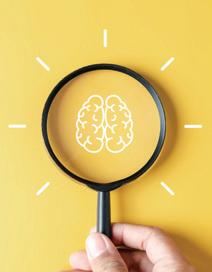
As we age our brain naturally becomes more insulin resistant. This creates a breakdown in communication between neurons, causing symptoms like changes in mood, cognitive decline, and eventually neurodegeneration. Nathan A. Smith, MS, PhD ('13), associate professor of Neuroscience, and fellow researchers studied the mechanisms in the brain that break down when insulin resistance is suddenly present, like in trauma, but before symptoms manifest into chronic conditions, like diabetes or Alzheimer’s.
The research, published in the journal PNAS Nexus, identifies mechanisms in the brain’s hippocampal network that are rescued by ketones. These findings build on previous research showing that ketones can alleviate neurological and cognitive effects.
“This research has implications for developing ketone-based therapies targeting specific neuronal dysfunctions in conditions involving insulin resistance/ hypoglycemia like diabetes or Alzheimer’s disease,” Smith said. “We are now looking to understand the role that astrocytes and other glia cells play in acute insulin resistance.”

How $50 Million will transform the lives of people with intellectual and developmental disabilities
"No person shall be defined by their limitations, but rather by their possibilities."
‑John Foxe, PhD
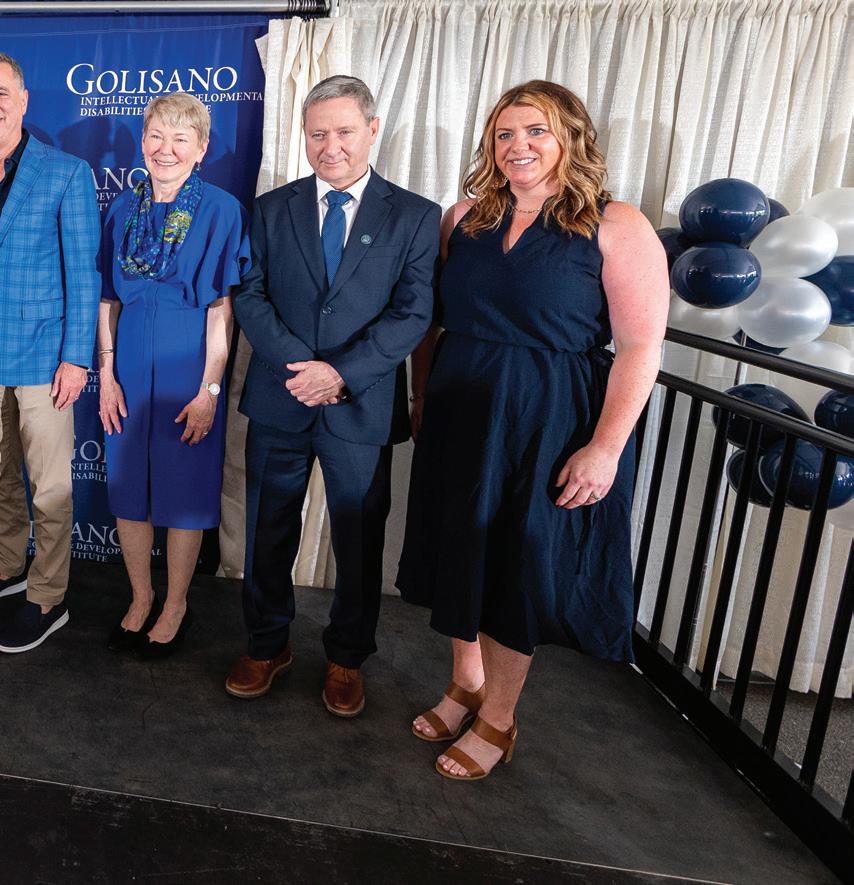
The year could have been 2044, or close to it, before the intellectual and developmental disabilities (IDD) clinical care and research at the University of Rochester Medical Center (URMC) would be able to merge in an unparalleled way and, possibly, break ground on a facility dedicated to bettering the lives of people living with IDD. But instead, on June 13, 2024, entrepreneur, philanthropist, and civic leader Tom Golisano made a historic $50 million commitment to the University of Rochester to build the Golisano Intellectual and Developmental Disabilities Institute at the University of Rochester Medical Center.

intellectual and developmental disabilities and their families.”
“Creating a better world for people with IDD has been a passion of mine for over 40 years,” Golisano said. “URMC’s vision for the new Golisano IDD Institute takes that dedication to a new and unprecedented level, putting patients at the center of every focus and providing one-stop integrated care and coordinated customized services. The impact will be an enhanced quality of life and access to care that, before now, has only been a dream for people with
“I am proud that Tom finds our medical center worthy of his investment,” said David Linehan, MD, CEO of URMC, dean of the School of Medicine and Dentistry, and senior vice president for Health Sciences for the University of Rochester. “There could be no better home for the Golisano IDD Institute, a center that will set the global standard for improving the lives of people with special needs, than the University of Rochester Medical Center.”
It is the largest single gift in the University’s history, and it will help build a new world-class transdisciplinary center to provide solutions to the traditionally underserved IDD population. Approximately 19,000 people are affected locally, 120,000 regionally, and 200 million worldwide. “We are now in the position to build a truly integrative IDD institute and to launch new critical initiatives,” said John Foxe, PhD, professor of Neuroscience, director of the Del Monte Institute for Neuroscience, and the founding director of the Golisano IDD Institute. “This would have taken us another two decades to realize. But Tom’s gift catapults us 20 years into the future.”
The year may be an arbitrary estimate of the time money could buy. However, the work is anything but, as Foxe explains. The institute will serve as a pivotal hub for advancing, advocating, serving, treatments, and education related to IDD. The work done at the institute will inform clinicians and policies around the world. Leading and building an institute like this is why Foxe was recruited nearly a decade ago by retired CEO of URMC, dean of the University of Rochester School of Medicine and Dentistry, and senior vice president for Health Sciences Mark Taubman, MD.
1961 Developmental and Behavioral Pediatrics begins providing clinical services specifically for children with autism
1966 Eastman Institute for Oral Health starts Specialty Clinic to treat patients with IDD and complex needs
1977 University designated a University Center for Excellence in Developmental Disabilities (UCEDD)
1994 UR receives Leadership Education in Neurodevelopmental Disabilities (LEND) designation
2008 Golisano Foundation donations open the now named Center for Disability and Education
2016 One of the first Complex Care Centers in the nation is built at URMC
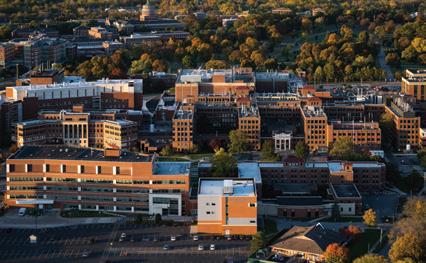

Clinicians and scientists at URMC have been at the forefront of research and care for people living with IDD for decades. Nationally recognized leaders in autism research and treatment, such as Susan Hyman, MD, professor of Pediatrics, and Tris Smith, PhD, the former Haggerty-Friedman professor in Developmental and Behavioral Pediatrics research, transformed the landscape of care and understanding of interventions for the disease. Smith’s research helped move treatment for children with autism toward behavioral interventions. Hyman’s work helped inform the American Academy of Pediatrics recommendations that early intervention for symptoms associated with autism is critical to improving outcomes among children, even before a formal diagnosis.
For 75 years, the Department of Pediatrics at URMC has provided care to children with IDD in our community. In the early 1960s, the division of Developmental and Behavioral Pediatrics began providing clinical services specifically for children with autism. Past department chairs, such as Bob Haggerty, MD, Lissa McAnarney, MD, Nina Schor, MD, PhD, and Pat Brophy, MD, moved this important work forward, cultivating a space where some of the most complex patients receive care. Today, Jill Halterman, MD, chair of Pediatrics and physician-in-chief at Golisano Children’s Hospital (GCH), leads the GCH team that continues to improve care, health, and quality of life for individuals with IDD.
As the population of people with IDD began to age, the Medical Center opened one of the nation’s first Complex Care Centers.
2017 URMC joins the Adolescent Brian Cognitive Development (ABCD) study, characterized as the largest long-term study of brain development and child health
2017 The Levine Autism Clinic opens in the newly constructed URMC Imaging Building
2017 Golisano donates $5 million to name Pediatric Behavioral Health & Wellness Building which opens June 2020
2018 The Special Olympics’ Center for Inclusive Health films at the Complex Care Center and Levine Autism Clinic for a series of videos on “Welcoming Spaces” and “Communication”
2020 UR designated as a Intellectual and Developmental Disabilities Research Center (IDDRC)
2024 Golisano Intellectual and Developmental Disabilities Institute established
It is a place where adults with IDD and complex needs could go for much of their medical care. Along with primary care, the center houses a multitude of specialties to integrate services with specially trained providers including dentists. Adela Planerova, MUR Dr, MS, is the director of dental services at the center that served more than 900 patients in 2023.
Oral health is the number one unmet health care need for people with an IDD. Eastman Institute for Oral Health (EIOH) is the largest provider in the Rochester region for people with complex needs. Several innovative techniques for managing patients with IDD such as desensitization, acclimation, gradual exposure therapy, lotion for touch therapy, aroma therapy, music and low light for relaxation, were developed by an EIOH alum. Today, the institute is led by Director Eli Eliav, DMD, PhD, and serves nearly 2,000 people with IDD a year from more than 40 counties in its community clinics, specialty care clinics, and at Strong Memorial Hospital. Wayne Lipschitz, DDS, MS, leads its Specialty Care Clinic and has performed oral surgeries on more than 3,000 patients with IDD. Its residency training programs train dentists and dental specialists to better serve patients with IDD.
Training is a cornerstone of URMC. In 1994, the National Institutes of Health (NIH) designated the Medical Center as a Leadership Education in Neurodevelopmental Disabilities (LEND). This program has supported the training of health professionals, including dentists, MDs, physical therapists, social workers, nurses, and others, to work with and care for people with IDD. Laura Silverman, PhD, associate professor of Pediatrics, is the program director who helps teach professionals from different disciplines how to be leaders in the field of developmental disabilities. LEND is one of three federal designations related to IDD at the University. The longest-standing designation is the University Center of Excellence in Developmental Disabilities (UCEDD). Suzannah Iadarola, PhD, associate professor of Pediatrics and Public Health, is the current director of the federally funded program that develops community partnerships, fosters accessibility and inclusion, and translates research into best practice, with and for people with IDD. The University received the third federal designation in 2020, becoming an Intellectual and Developmental Disabilities Research Center (IDDRC). The center is co-led by Foxe and Ania Majewska, PhD, professor of Neuroscience. This final designation thrust the University onto the short list of eight institutions with the trifecta of federal awards related to IDD, giving a nod to its research, training, care, and community partnerships.
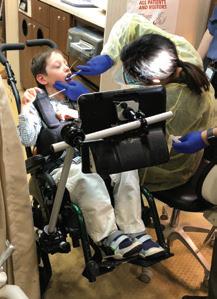
Within a year of receiving the IDDRC designation, the University partnered with Mary Cariola Center, an education and life skills center for people with severe IDD and complex medical needs, to understand the impact of the COVID virus on the IDD community. Along with providing the school with real-time test results and mitigating the virus by identifying asymptomatic cases, this project is informing how airborne illnesses spread and impact this type of setting.
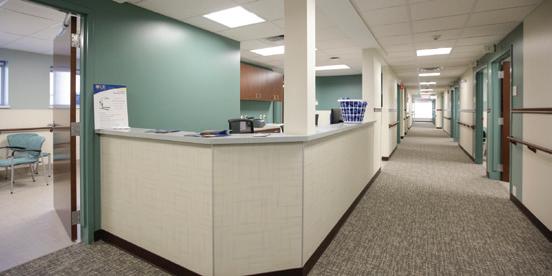
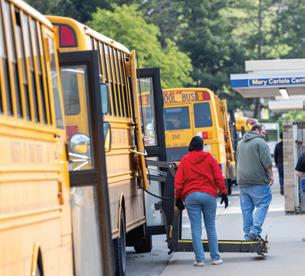
“There could be no better home for the Golisano IDD Institute, a center that will set the global standard for improving the lives of people with special needs, than the University of Rochester Medical Center.”
–David Linehan, MD
The Golisano IDD Institute will coalesce the years of tradition and growth and build upon the University’s nearly $80 million investment in IDD programs over the past nine years. It will help close gaps, address challenges, meet demands, expand educational opportunities, and community partnerships.
IDD clinical care and research will be brought together in one building. It will include a second Complex Care Center, become a primary training site for healthcare providers specializing in this area of care, and expand the EIOH Specialty Clinic and telemedicine services.
Developmental and Behavioral Pediatrics, as well as the LEND and UCEDD programs, will expand their
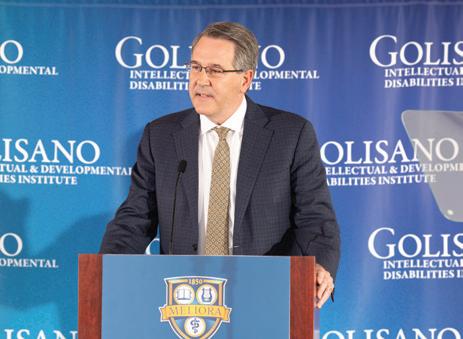
integrated care and developmental disabilities training functions, and collaborate across the institute to ensure advocacy, accessibility, and education are relevant to the needs of the IDD community. Researchers in the IDDRC and Del Monte Institute for Neuroscience will advance diagnostics and provide genetic testing to leverage our understanding of IDD.
“We can now purchase the highly sophisticated tools required to allow breakthroughs in diagnosis and treatment, hire and train more professionals, and better meet the growing demand for services,” Foxe said. “It is a truism that the test of the strength of a great society is to be found in the ways it treats its most vulnerable. Here in the new Golisano IDD Institute, we will hew to a simple but powerful maxim—that no person shall be defined by their limitations, but rather by their possibilities.”
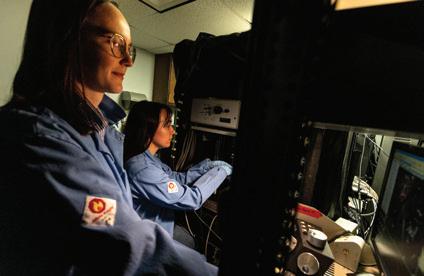
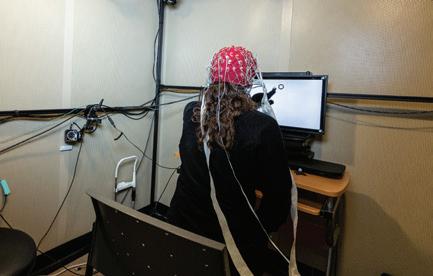

New research describes for the first time how a spreading wave of disruption and the flow of fluid in the brain triggers sensory nerves in the head, detailing the connection between the neurological symptoms associated with aura and the migraine that follows. The study, published in the journal Science, was conducted in mice, also identifies new proteins that could be responsible for headaches and the foundation for new migraine drugs.
Maiken Nedergaard, MD, DMSc, co-director of the University of Rochester Center for Translational Neuromedicine and lead author of the study and fellow researchers found that as the depolarization wave spreads, neurons release a host of inflammatory and other proteins into cerebrospinal fluid (CSF). In a series of experiments in mice, the researchers showed how CSF transports these proteins to the trigeminal ganglion, a large bundle of nerves that rests at the base of the brain and supplies sensation to the head and face. They also observed that the wave of depolarization is limited to one hemisphere of the brain and stimulates the corresponding right or left side nerve bundle in the trigeminal ganglion, potentially explaining why pain occurs on one side of the head during most migraines.
URMC neurologist Gretchen L. Birbeck, MD, MPH, was the only neurologist in Zambia when she began conducting research there 30 years ago. Her work on how to prevent post-malaria epilepsy may benefit Zambians and populations around the globe, including patients living 7,000 miles away in Rochester.
Birbeck is one of many Rochester doctors and researchers engaged in international research. It’s not only about investigation into the treatment of disease but also about building sustainable health care “capacity” in the host country, preparing it to prevent, treat, and stem the spread of disease.
Two of Birbeck’s NIH-funded studies examine the use of aggressive antipyretic therapy for fever control and the neuroprotective and/or side effects of the therapy. In addition to malaria deaths, more than a third of pediatric cerebral-malaria sufferers—about 200,000 children each year—end up with neurological disabilities. Her findings are key to reducing the effects of the disease and the accompanying disability for sufferers in malaria-endemic regions but also have implications around the world.

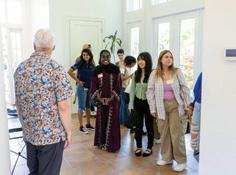


The Neuroscience Diversity Commission welcomed NEUROCITY and NEUROEAST scholars to the University for summer research opportunities. They were joined by Meliora and Bilski-Mayer Fellowships recipients at a welcome picnic in May.

We're grateful for Robert Fisher, DDS, ’76, ‘80D (Pdc), and his wife Denise for bringing together John Foxe, PhD, M. Kerry O’Banion, MD, PhD, and fellow UR alumni for an event at their home. The Fishers are parents to three children, including their middle son, Andrew, who was diagnosed with autism as a young child, and now thrives as an adult.

The Fishers are long-time supporters of the University and along with being members of the George Eastman Circle, the University's leadership annual giving society, they are also members of the Wilson Society, which recognizes those who have made provisions to support the University of Rochester in their estate plans. The Fishers chose to establish an endowed fund, supporting autism and IDD research in perpetuity, and creating a special legacy for their family.



